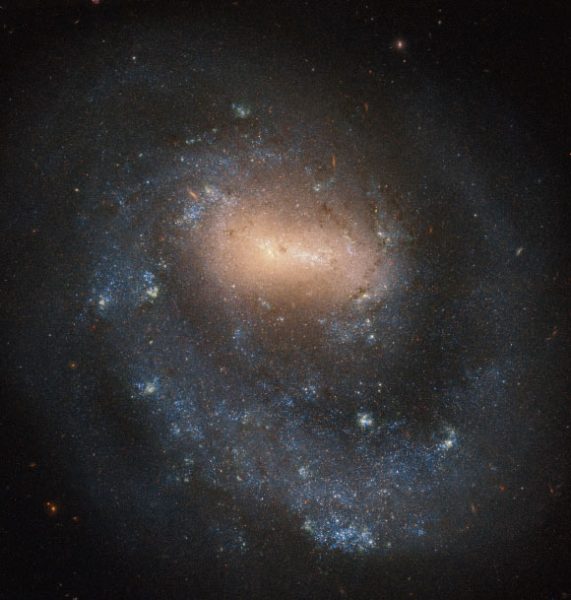NGC 4618: Hubble Spots Spiral Galaxy with Single Arm | Astronomy – Sci-News.com
The NASA/ESA Hubble Space Telescope has captured an amazing new photo of an unusual spiral galaxy called NGC 4618.

This Hubble image shows the barred spiral galaxy NGC 4618. The color image was made from separate exposures taken in the visible and near-infrared regions of the spectrum with Hubble’s Wide Field Camera 3 (WFC3) and Advanced Camera for Surveys (ACS) instruments. Three filters were used to sample various wavelengths. The color results from assigning different hues to each monochromatic image associated with an individual filter. Image credit: NASA / ESA / Hubble / I. Karachentsev.
NGC 4618 is a barred spiral galaxy located approximately 21 million light-years away in the constellation of Canes Venatici.
Otherwise known as LEDA 42575 or UGC 7853, the galaxy has a diameter of about one third that of the Milky Way.
NGC 4618 has the special distinction amongst other spiral galaxies of only having one arm rotating around the center of the galaxy.
It was included in the Atlas of Peculiar Galaxies as one of three examples of nearby galaxies with single spiral arms.
Together with its neighbor, NGC 4625, NGC 4618 forms an interacting galaxy pair, which means that the two galaxies are close enough to influence each other gravitationally.
“These interactions may result in the two (or more) galaxies merging together to form a new formation, such as a ring galaxy,” Hubble astronomers said.
NGC 4618 was discovered by the German-born British astronomer Wilhelm Herschel on April 9, 1787.
“Only a year before discovering NGC 4618, Herschel theorized that the ‘foggy’ objects astronomers were seeing in the night sky were likely to be large star clusters located much further away then the individual stars he could easily discern,” the researchers said.
“Since Herschel proposed his theory, astronomers have come to understand that what he was seeing was a galaxy.”




